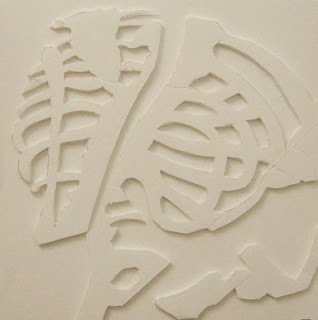Today's Class- Today the topic was planes, as in surfaces of 3D art. We looked at some examples of Frank Lloyd Wright houses and Richard Serra sculptures, two artists who used broad planes in their work. Then we moved on to a portfolio exercise on this topic.
Automobiles can be considered our most potent consumer durable good, and probably the most heavily advertised thing as well. They have inspired art for more than a century. Tonight we considered external appearances, and students were asked to build a model of a favorite car, one chosen just because they liked the appearance, and not based on cost, speed, reliability, etc. Instructions were to build it using foam core and bristol board, and each time a piece was cut out to be included in the car, an identical piece was to be cut out and set aside. After your model of the car is completed and assembled, take the second set of pieces and turn the into something else- can be a recognizable object or abstract, anything but a car. Below are some student examples from previous semesters.
And here are examples from tonight's class-
How to make this up- Everyone was present and completed the assignment
Homework- The positive/negative space graded project (skeletons) is due March 1, 2017.
For next class 3/1/17- We will start our next graded project, the stone age art project. Art of that era was made from natural materials, as there was nothing else. Often the shapes of the materials dictated the subject. I will be providing some seashells and pieces of bamboo. You need to bring some natural materials of your choosing, such as natural wood (no plywoods), stones, seeds, etc. Pieces of living plants (such as leaves and flower petals) are permitted, but they will start to wilt almost immediately, so should be added just before it's turned in. You will need glue to attach everything together- hot glue is recommended for this project. And because the cave based artists of long ago somethings painted their creations, you have that option as well. Below are some examples from previous semesters
The subjects should reflect the kinds of subjects used by artists of the cave dwelling era- so humans, animals, mythological human/animal hybrids, all of which can be whole or parts of such things.
























